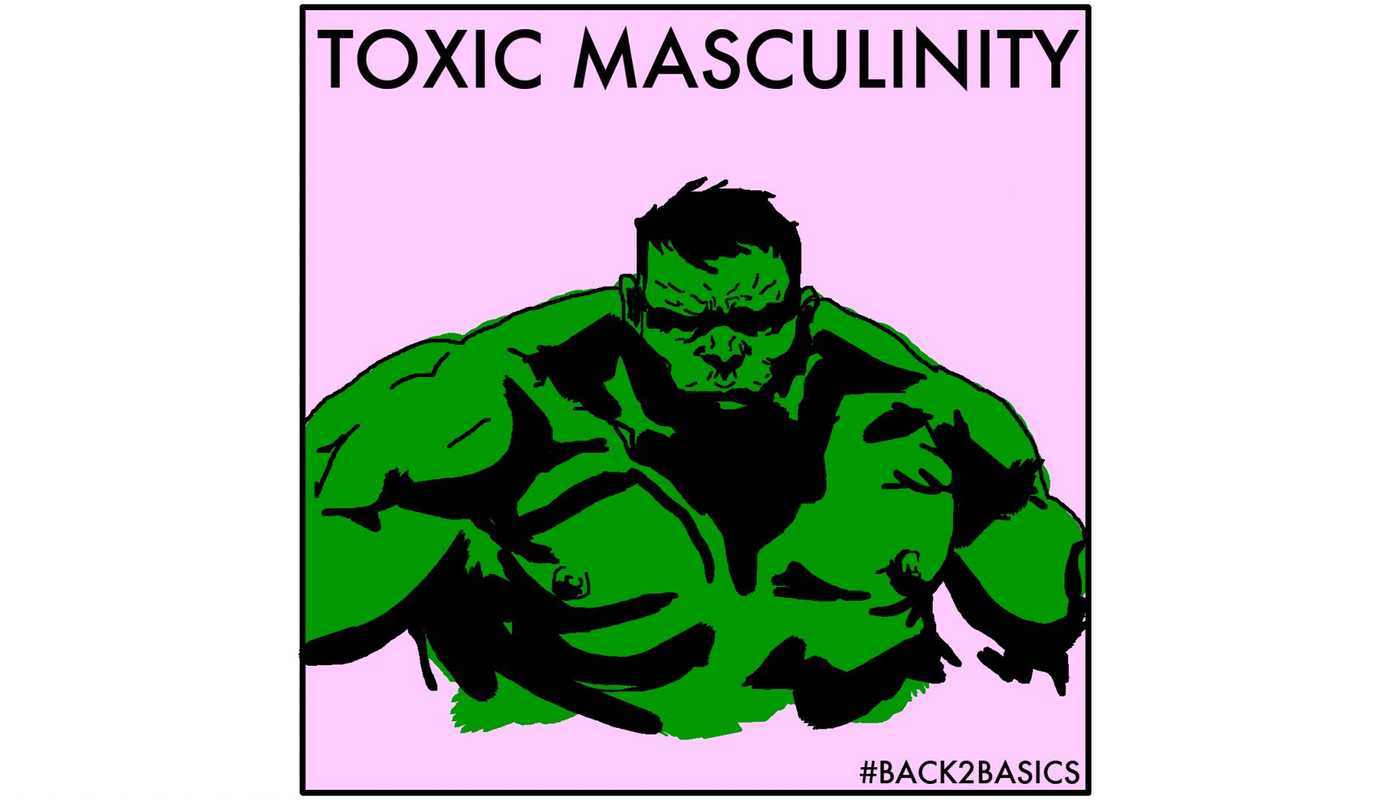“The first act of violence that patriarchy demands of males is not violence towards women. Instead patriarchy demands of all males that they engage in acts of psychic self-mutilation, that they kill off the emotional parts of themselves. If an individual is not successful in emotionally crippling himself, he can count on patriarchal men to enact rituals of power that will assault his self-esteem.” bell hooks
Gender and Masculinity Patriarchy constructs a dualistic notion of gender rooted in European enlightenment thought and reflected in colonial discourse. We are limited to identifying as either male or female, and all too often, to be male is to be dominant and to be female is to be defined by lack. If you look up masculinity in an Oxford Dictionary, it reads: ‘Possession of the qualities traditionally associated with men: ‘handsome, muscled, and driven, he’s a prime example of masculinity’. We’ve all heard: ‘real men don’t cry’, ‘man up’, ‘grow a pair’, and ‘boys will be boys’. How does this impact our understanding of masculinity? How do ideas of masculinity affect those who are labelled as men and those who are not? And what happens when people struggle to meet the norms associated with masculinity or challenge them? Emotion and Violence Violence is inherent in the way that we police the boundaries of what it means to be a man. Society dictates that men who cry are weak and to be weak is to lose your worth; not conforming to this idea of ‘manhood’ can mean losing your identity and purpose. Instead violence is a more acceptable way to express and process emotions. Conditioning men to suppress emotion is itself a form of violence which inevitably leads to the reproduction of more violence. Suicide is the single largest cause of death for men under the age of 45 in the UK. In 2015, 75% of all UK suicides were committed by men. The societal pressure faced by men is perhaps best summed up in an interview with filmmaker Barry Jenkins, who witnessed a violent scene between two boys unfolding, after one of them had tripped over the other: “If it had just been the two of them, it would have been like ‘my bad’. But because the whole world witnessed this transaction, now it’s like who does the world think I am in response to this? I can’t let this guy make me fall on my face. Someone has to be punished, otherwise the world will punish me.” Performing Masculinity by Demeaning Others Within a hierarchy of men, women and non-gender conforming individuals, there are a myriad of ways in which men can assert their masculinity. One of the seemingly most acceptable ways in which men perform masculinity, both in popular culture and in everyday life, is through demeaning, sexualizing and putting down women — from so-called mansplaining (interrupting women to explain something in a patronising way and demonstrate one’s supposed superior knowledge), and instructing women on how to act or dress — to harassment, domestic violence and rape. Marginalised masculinities and gender identities are not immune to any of this. Challenging the norms and highlighting the fragility of our constructions of gender can often be met with aggression. Those who blur the lines between gender roles and defy the expectation that they should act in accordance to the gender they were assigned at birth can be particularly vulnerable. Intimacy and Homophobia To be a ‘real man’ usually means to be heterosexual, with intimacy only being acceptable within a narrow framework of conscribed gender roles (between cis men and cis women). The status of one’s masculinity has to be proven by conforming to these roles in a way that is acceptable to and affirmed by other men. To be vulnerable, to discuss emotion, to be physically close with, to be penetrated by another man (in a culture in which the act of penetration symbolizes dominance and power) is to be seen as feminine and passive. For this reason, men distance themselves by publicly denouncing and vilifying all forms of non-heterosexual expression — homophobia becomes central to preserving the hegemony of masculinity. Capitalism and Racialized Masculinities This brings us to the last and final point: not all men experience and derive power from masculinity in the same way. In our capitalist world order, wealthy men are higher up in the hierarchy than less economically privileged individuals. As a construct, masculinity is a racialized and informed by histories of slavery and colonialism. Whiteness is deemed to be the default, the norm, and confers relative entitlement and privilege onto White men. In line with this society has constructed preconceived notions about men of certain races. For instance, black men are constructed as hyper-masculine, Asian men as feminine, and Arab men as deviant. Racialized masculinities demonstrate how our most intimate realities, in this case our ideas of manhood, are entangled in the history of political events on a macro level, and in the most insidious ways. Resistance in the age of Trump: talking about toxic masculinity ‘Men must be able to look at the ways that patriarchal culture keeps them from knowing themselves, from being in touch with their feelings, from loving’ – quote from The Will to Change: Men, Masculinity and Love – a book by bell hooks (2004) Related links: Real Men – a Poem by JJ Bola (2012) U-Zine – a blog on Masculinity Moonlight – a film by Barry Jenkins(2017) All Man – a TV series by Grayson Perry (2016) SLAP – a short film by Nick Rowland (2014) Campaign Against Living Miserably – a charity dedicated to preventing male suicide Dissecting Masculinity Workshops – run by Consented Magazine Challenge Eurocentrism Yearning: Race, Gender and Cultural Politics a book by bell hooks (2014) Native Americans and Two Spirits – a short film by Al Jazeera (2016) Queering Gender Gender Trouble – a book by Judith Butler (2006) ‘I’m not a woman. I’m not a man. I am something that you’ll never understand’ – a song by Prince (1984) ‘Well, if you start putting on dresses when you’re 12, it’s a bit of a wake-up call. Being a transvestite does somewhat force the issue’ Interview with Grayson Perry in The Guardian (2016) Dance! Queer Dance Party in front of Mike Pence’s home – Protest (2017) M’Y – dance by Claude Cormier (2016) Back to Basics is a Skin Deep project aiming to redefine and reevaluate words or expressions that we hear regularly in our daily lives and in the media, that are often decontextualized and poorly defined. We want to give different, and hopefully clearer, perspectives on what these terms mean, to provide you over time with a little handbook of quick and shareable definitions for when you need them most.




.jpg)